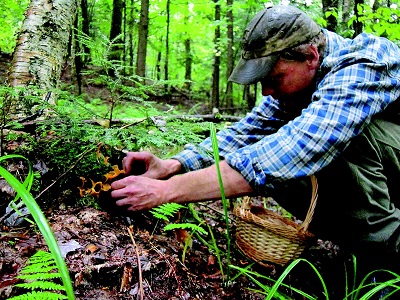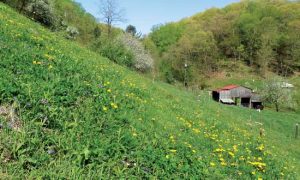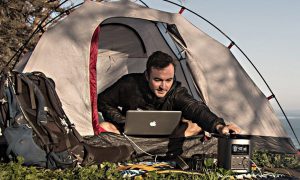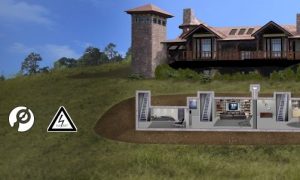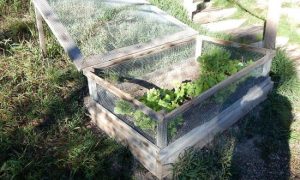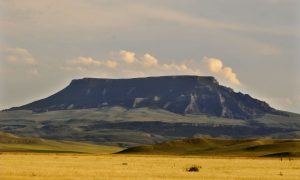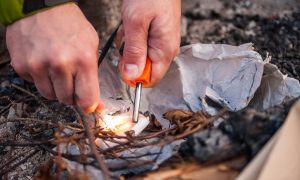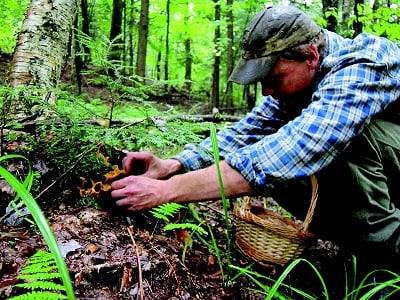
There are numerous skills that a homesteader needs to use on any given day; some are learned and others are passed down from homesteader to homesteader.
In this excerpt from The Nourishing Homestead, author Ben Hewitt talks about why these skills are important to pass down to each generation, perhaps even if you’re not a hardcore homesteader. Throughout his book, Hewitt touches on many essential homestead skills, such as food preservation, animal management, and basic butchery. The following are other skills his family employs on a regular basis.
Recently, we heard a news segment on the radio discussing the need for children to begin learning computer programming at an early age. Apparently, the magic window of opportunity when a child’s mind is developed enough to assimilate the information—but not so developed that the knowledge does not imprint itself in some deep and irreversible way—is the age of five. I can’t help but wonder how different the world might be if teaching five-year-olds how to cook and mend clothing were as important to us as teaching them how to write code.
Of course, it wasn’t long ago that learning such skills was an important part of almost every child’s education. Today, thanks partly to budget cuts and partly to a collective societal agreement that skills of the hand are no longer worthy of our children’s attention, we’ve abandoned this learning to make room for more practical knowledge, with practical being defined in terms of career preparedness. How tragically ironic that the truly practical life skills essential to providing for self and community have been usurped by the pragmatism of employability.
I am always bemused and somewhat saddened to hear our political leaders calling for more “skilled” workers, because I know that the skills they speak of are the specialized skills demanded by industry. They are the skills that are most profitable to the companies that make up industry, not those that liberate us to provide for ourselves and serve our communities outside the context of the moneyed economy. By training our children and ourselves to do the bidding of industry, we are in essence commoditizing them. Our collective lack of personal capability—to build our own shelters, tend our own gardens, process our own animals, maintain our own tools, and so on—ensures that we are never truly free.
Not for a second am I suggesting that everyone reading this book must come to embody every skill necessary to turn their back on the consumer economy. My family certainly doesn’t. Instead, we have chosen to focus on acquiring those skills that:
(1) enable and support our homestead;
(2) are not readily available in our immediate community;
(3) save us the most money and/or time and hassle;
(4) we can do better than others; and,
(5) enrich our lives in other ways. In other words, for the most part, we focus on those skills we deem most pragmatic.
It is beyond the scope of this book to provide detailed instructions in every possible homestead skill. To do so would mean you’d need a team of oxen just to haul the thing around, and when it came time to read, you’d have to climb atop their backs so you could turn the pages. And rarely is a book the best medium for learning specific hands-on skills; for that, you’re always going to be better off finding someone who can work with and even mentor you, who can demonstrate how much of a difference just a small adjustment in blade angle or hand position can make.
The age of YouTube has been both a boon and a curse to skills learning. It’s a boon because of course anyone with an Internet connection now has access to literally millions of searchable skills videos, and some of them are quite good. It’s a curse because these videos threaten to further erode the face-to-face transfer of these skills and the already-faltering mentor–apprentice culture. Real-life skills have disappeared from our communities in large part because of the emergence of technology and industry, and it seems specious to suggest that these same forces will somehow bring them back. Yes, you can learn specific skills on the Internet, but a bunch of people reskilling themselves in front of computer monitors will not restore the cultures in which these skills flourish and are passed down, nor will they support the few remaining skilled workers in their communities. YouTube cannot help us experience the joy and necessity of real human connectivity, which is quickly being lost to the artifice of Internet connectivity. While I can’t claim that we never turn to the Internet for skills-based learning, I can say that we almost always try to seek out face-to-face instruction first. Yes, sometimes it costs more. But the “free” instruction that comes over our computers also comes at a price, and part of that price is the increasing irrelevance of the remaining elders in our communities who still embody this knowledge.
While many of the skills essential to a thriving homestead are those of the hands, we are often struck by how many are those of the head. In other words, they are interior skills of perception and understanding borne of experience. These skills cannot be taught; they can only be learned. But I include them anyway, if only because we often wish we had started learning them earlier than we did.
Basic Building Skills
I almost wrote “carpentry,” but the truth is, you needn’t be a carpenter to keep your homestead humming along. The homestead does not require craftsmanship, but it does demand a basic grasp of building techniques, along with enough tool-operating experience to mitigate the threat of injury. Sometimes it seems as if we can’t get through a day without picking up a hammer and saw, and I cannot overstate just how crucial it is that any would-be homesteaders familiarize themselves with basic building methodology.
knife/saw/ax sharpening
As the old saying goes: If you have 20 minutes to cut, spend 15 minutes sharpening. A dull knife blade or chain-saw chain is probably the most dangerous device on a homestead. It’s also the most inexpensively and quickly remedied, although it’s shocking how many people fail to maintain
well-honed cutting tools, probably because they just don’t know how. After years of practice, we are still perfecting our sharpening techniques, but even an imperfectly sharp cutting implement is better than a perfectly dull one.
sewing
You needn’t actually be able to make your own clothing (though it’s really inspiring if you can), but you’d better be capable of patching the knees of your favorite work jeans. Truthfully, this is one I’m still struggling with; it takes me hours to patch a hole that Penny or even one of the boys can do in 15 minutes or less, and every time I sit down with a needle and thread, I need a refresher on how the two go together. But I’ll get there. We’ve also found it invaluable to have basic leather stitching equipment, primarily for making knife and ax sheaths.
mechanics
For those of us who are not mechanically inclined, I cannot overstate just how crucial a good mechanic is to this life. A good mechanic is central to a prosperous rural life, because there’s no way you can live the life we do and pay dealer prices to repair your car. You need a mechanic who can keep a rig on the road long past the point any dealer would’ve tried to flip you into a new model, complete with 0 percent financing and low, low monthly payments. You need a mechanic who’ll lean over the engine compartment with you and listen while you describe your own fumbling attempts to fix the damn thing yourself and why you believe that somehow imbues you with insight regarding what the problem actually is.
You need a mechanic who’ll patch up the mess you made and then address the real issue, using parts pulled off one of the junkers sinking into the weeds on the fringes of his lot. But you also need to be willing to get your hands dirty, because much of the machinery—be it motorized or not—that enables this life is not readily transported to a mechanic. We are not expert or even intermediate level mechanics, but we have committed ourselves to learning basic maintenance for the machines we rely on. At the very least, keeping this machinery maintained will reduce the frequency of breakdowns and extend its life span.
drop spindling
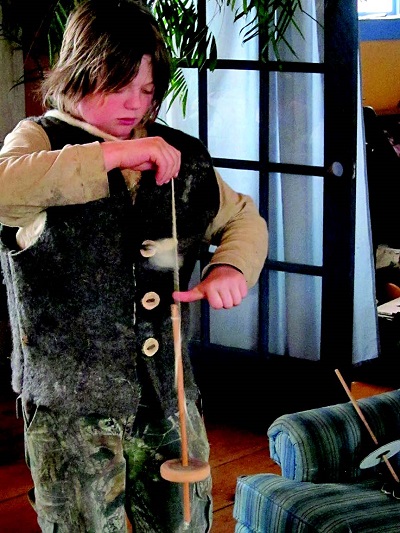
Spun fiber is an essential component of human survival but is something we all take for granted. Socks, sweaters, hats, shirts, dish towels, and blankets are part of everyone’s daily life, though few of us have even the faintest idea how to make these items for ourselves. The drop spindle is a ridiculously simple, productive, and versatile device. With enough practice, it can actually be faster than a spinning wheel—and even a dexterous five-year-old can use it to make fiber. Best of all, spindles are easily made from a branch or dowel and round of wood. Once complete, they’re entirely portable; you can carry a drop spindle and batch of wool with you just about anywhere.
knitting
Even if you’re not spinning your own fiber, knitting is a practical and satisfying skill. There is nothing quite like donning a warm sweater or hat on a winter’s day, made by your hands or those of someone you love. It’s also one of the most portable skills. We have all learned how to knit, though I won’t be churning out any complicated patterns anytime soon. I’m not going to get specific regarding all the different options for knitting supplies; my best advice is to find a friend or family member who knits (everybody has one!) and let them help you get started, since this is a skill that particularly lends itself to sitting next to someone experienced while you learn.
foraging
The longer we live on this land, the more we rely on the wild and semi-wild uncultivated fields and forests for our nourishment. Foraging is an incredibly empowering skill; perhaps more than anything else, it has altered our view of the natural world, and helped us understand just how generous and abundant nature is. It’s rare for us to go on a woods walk in spring, summer, or fall without filling our pockets with mushrooms, wild onions, fiddlehead ferns, chaga, wood sorrel, nettles, and so on. The boys might return home with a length of hardhack for a bow, and Penny a spruce burl to be carved into a bowl. With the exception of our frequent mushroom and wild blackberry gathering, most of our foraging happens in the course of other activities.
Often, it occurs in the most unexpected places: In three of the past four winters, we’ve filled our freezers with venison, courtesy of roadkill deer (and because these were all hit by other drivers, we didn’t even have to fix our car).
While the perceived danger of illness or death by poisonous wild plants and fungi is far greater than the actual danger, it’s obviously crucial to learn which species of flora are potentially harmful.
We are fortunate to count many expert wildcrafters among our friends and have benefited tremendously from their experience and willingness to share it. Guidebooks are essential also, although we consider our guidebooks to be secondary to the knowledge of local experts, and we use them for confirmation only. Our friend Erik, one of our primary foraging mentors, goes by the rule One human and two books.
Other key skills Hewitt addresses in this chapter include:
metalworking (welding, blacksmithing)
hunting and trapping
plumbing
wiring
basket making
processing hides
felting
carving
and more!
Click here to view original web page at www.chelseagreen.com

